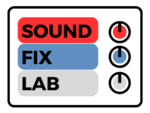Rhythm forms the backbone of any musical composition, serving as a vital element in songwriting and music production. It encompasses the patterns and structures of beats, accents, and durations that give a composition its groove and energy. In this article, we will delve into the function of rhythm in a song, discuss its rules of thumb, explore its genre-specific variations, identify associated instruments, and provide insights on determining the right rhythm for your compositions.
Function of Rhythm in a Song
Rhythm plays several important roles in a song. Firstly, it establishes the tempo, providing a sense of pace and movement. It creates a foundation that helps listeners connect with the music emotionally and physically. Additionally, rhythm provides structure and cohesion, facilitating the arrangement and synchronization of various musical elements. It can enhance the overall mood, drive the energy, and define the genre of a song.
Rules of Thumb for Rhythm
While there are no rigid rules for rhythm in songwriting, certain guidelines can help you craft compelling rhythmic patterns. Firstly, strive for consistency and coherence within the song, ensuring that the rhythm supports the overall theme and message. Consider the lyrics, melody, and harmony, and create a rhythm that complements and enhances these elements. Emphasize clarity and simplicity, allowing the rhythm to be easily understood and felt by the listener. Experiment with variations, syncopation, and accents to add interest and dynamics to your compositions.
Genre-Specific Variations
Rhythm varies significantly across different genres, reflecting the unique characteristics and traditions of each style. For example, in pop and rock music, the rhythm section typically consists of drums, bass guitar, and rhythm guitar, driving the groove and providing a strong foundation. In jazz, complex rhythmic patterns and improvisation are prominent, often involving instruments like piano, drums, and upright bass. Electronic dance music (EDM) relies heavily on pulsating beats, syncopation, and rhythmic effects to create an energetic atmosphere. Explore various genres to gain insight into their rhythmic nuances and adapt them to your own compositions.
Determining the Right Rhythm
Knowing when a song needs more or less rhythm is a matter of intuition and experimentation. Pay attention to the overall feel and energy of your composition. If the song feels lacking or lacks momentum, consider adding rhythmic elements to drive it forward. Conversely, if the rhythm feels overpowering or cluttered, simplify or reduce certain elements to create more space and clarity. Trust your instincts and seek feedback from trusted listeners or fellow musicians to refine your rhythmic choices.
Suggestions and Advice for Rhythm
- Study and analyze the rhythmic patterns of songs you admire in your chosen genre(s). Take note of how they contribute to the overall composition.
- Experiment with different instruments and percussion elements to create unique and interesting rhythms.
- Practice playing rhythmic patterns on various instruments to develop a deeper understanding of their impact.
- Collaborate with other musicians to explore new rhythmic ideas and broaden your creative possibilities.
- Remember that rhythm is not solely confined to drums and percussion. Explore the rhythmic potential of melodic instruments, vocals, and even sound effects.
- Listen to these songs that have universally well liked rhythms:
- Pop | “Uptown Funk” by Mark Ronson ft. Bruno Mars is known for its infectious and groove-inducing rhythm.
- Rock | “Back in Black” by AC/DC is a rock anthem with a powerful and driving rhythm that resonates with many.
- Jazz | “Take The ‘A’ Train” by Duke Ellington is a jazz standard with a captivating swing rhythm that has stood the test of time.
- EDM | “Clarity” by Zedd ft. Foxes showcases a dynamic and energetic rhythm that is often appreciated within the EDM community.
Mastering rhythm in songwriting and music production is a continuous journey of exploration and experimentation. By understanding the function of rhythm, exploring genre-specific variations, and honing your intuition, you can craft compelling compositions that captivate listeners and bring your musical vision to life. Embrace the power of rhythm, and let it be the driving force behind your creative endeavors.





